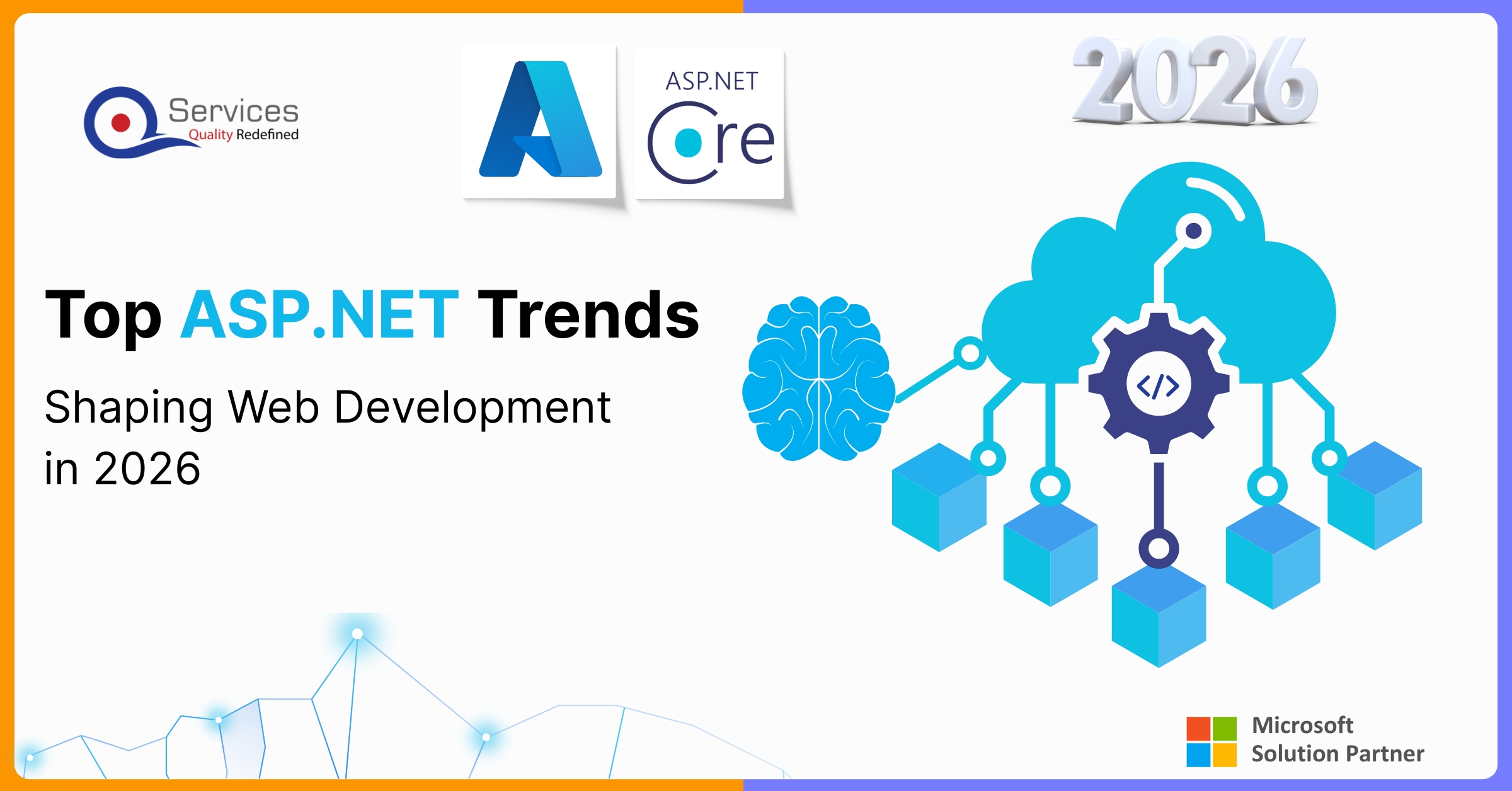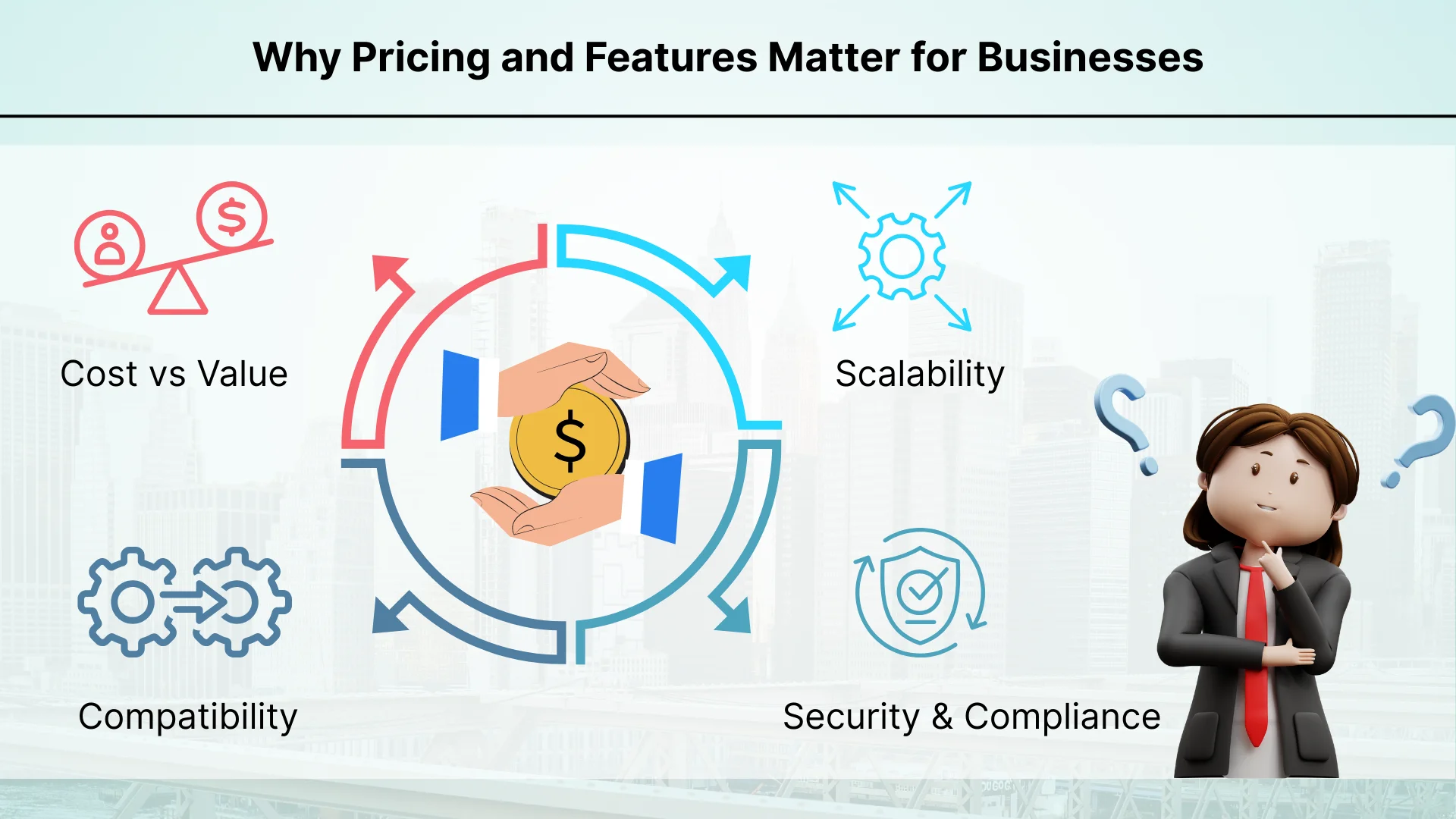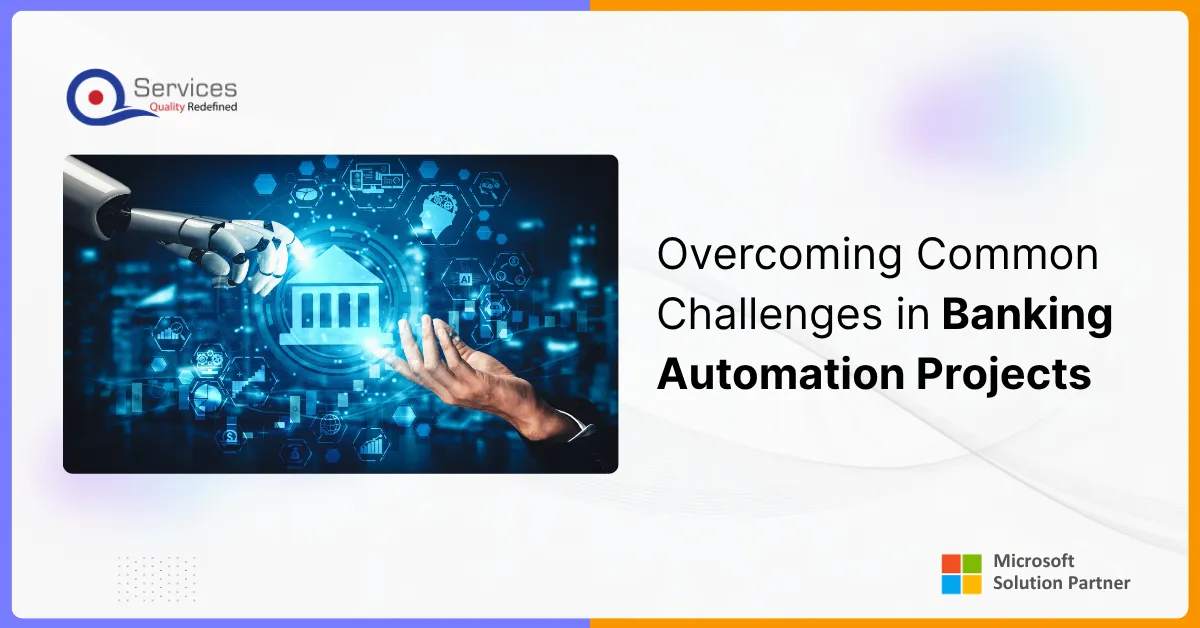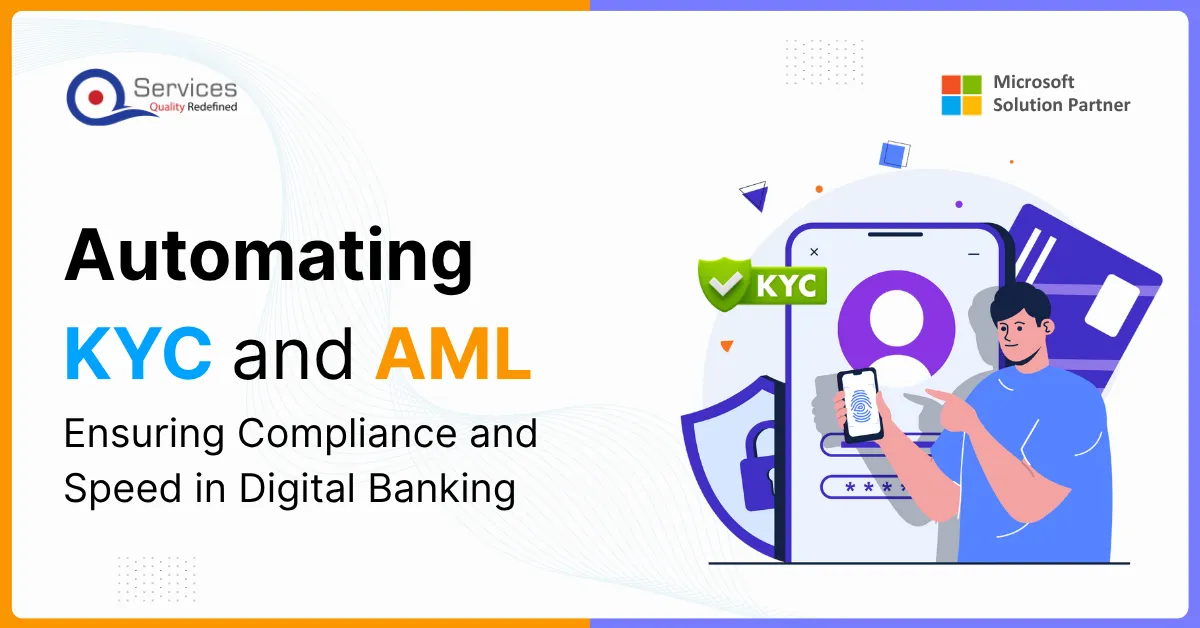
Home » Azure IoT vs AWS IoT vs Google IoT Pricing: Feature Comparison Chart for Enterprise [2025]
![Azure IoT vs AWS IoT vs Google IoT Pricing: Feature Comparison Chart for Enterprise [2025]](https://www.qservicesit.com/wp-content/uploads/2025/03/Microsoft-Teams-vs-Slack-vs-Zoom-TCO-Analysis-for-Enterprise-Organizations-2.webp)
The Internet of Things (IoT) helps businesses run better by connecting devices, collecting information, and improving choices. But picking the best IoT cloud provider can be confusing. The main three are AWS IoT vs Azure IoT vs Google IoT. Some businesses choose Azure IoT over AWS IoT because it works better with Microsoft tools. Others prefer Google Cloud IoT instead of AWS IoT because it’s great for data analysis.
Businesses need to think carefully before choosing an IoT platform. Here’s why:

The platform should grow with the business without becoming too expensive.
Businesses must protect their data and follow security rules. IoT cloud providers should offer strong security features.
If a company already uses Microsoft tools, it might compare AWS IoT Core and Azure IoT Hub. Others may check Google IoT Platform and AWS IoT to see which fits better.
The cheapest option isn’t always the best. Some platforms offer extra tools that help businesses in the long run.
In this blog, we will provide an IoT Platforms Comparison: AWS IoT vs Azure IoT vs Google IoT Core, focusing on their pricing, features, and business benefits.
When choosing an IoT cloud service, businesses look for tools that help them manage devices, keep data safe, and analyze information. AWS IoT, Azure IoT, and Google IoT all offer these features, but they do things a little differently.
Companies with thousands of smart devices need an easy way to control them.
AWS IoT Core lets businesses connect and manage devices, but it can be tricky to set up, especially for companies that don’t already use AWS services.
Azure IoT Hub makes this process simpler, especially for businesses that use Microsoft products. It also includes Azure IoT Edge, which allows devices to process data locally instead of sending everything to the cloud. This is helpful when internet access is slow or unreliable.
Google Cloud IoT used to have a service called Google IoT Core, but it was discontinued. Now, businesses must use other Google tools to manage their devices, which can be more complicated.
Security is one of the biggest concerns and challenges in IoT cloud services because connected devices can be hacked if they aren’t well protected.
AWS IoT Core has strong security features, including encryption (which protects data) and identity management (which controls who can access the system).
Azure IoT Hub takes security a step further by working with Microsoft Defender for IoT. This tool helps businesses detect threats and stop cyberattacks before they happen.
Google Cloud IoT also offers encryption and identity management, but businesses may need to set up these tools manually to get the most protection.
IoT devices gather a lot of data, but businesses need analytics tools to make sense of it.
AWS IoT Core works well with AWS SageMaker, which helps companies use AI to predict trends. However, setting up analytics on AWS can take extra effort.
Azure IoT Hub connects easily with Azure AI and Power BI, making it simple to track trends and create reports. This is especially useful for businesses already using Microsoft tools.
Google Cloud IoT is great for data analysis. It works with BigQuery and Vertex AI, which are some of the best tools for handling large amounts of data. But since Google IoT Core was discontinued, businesses might need extra setup to get everything working.
Let’s compare the pricing of these platforms to help businesses find the best value.
The cost of using an IoT cloud platform is a key factor for businesses that want to connect and manage smart devices. However, pricing is not always straightforward. There are different types of costs, and if businesses don’t plan carefully, they might end up paying more than expected.
Here, we’ll explain how AWS IoT, Azure IoT, and Google Cloud IoT charge for their services in a simple way. We’ll also cover hidden costs that can add up over time.
Before comparing the three platforms, let’s first understand how IoT pricing works. These services don’t have a single fixed cost; instead, they charge for different things based on how much and how often you use them.
Smart devices send and receive data (known as messages) over the internet. The more messages a device sends to the cloud (or receives from the cloud), the more you pay.
All three platforms—AWS, Azure, and Google—charge per million messages. Some offer discounts if you send a very large number of messages, while others stick to a flat rate.
Managing connected devices involves things like software updates, tracking device health, and fixing issues remotely. While some basic features are free, advanced features—such as bulk updates and automatic monitoring—may come at an extra cost.
IoT devices gather a lot of data, and businesses often need to store this information for future use or compliance reasons. Some cloud platforms provide a small amount of free storage, but beyond that, they charge based on how much data is stored and how long it’s kept.
While basic security features like encryption and password protection are included, advanced security options such as extra authentication, real-time threat detection, and compliance with industry standards often come at an additional cost.
Many businesses analyze IoT data usingAI and machine learning tools. Some cloud platforms include basic data analytics for free, but advanced AI-powered processing requires extra payment.
Most cloud providers let businesses use their IoT services for free at first, so they can try them out before paying. However, each provider offers different free benefits.
After the free period, businesses have to pay based on their usage. Here’s a look at how the pricing compares:
While Google IoT Core seems the cheapest per message, the total cost may increase due to separate security and management services that are included in Azure’s plan.
Along with the standard pricing, businesses should also be aware of extra costs that can significantly impact on the final bill.
When IoT data moves between different services, some platforms charge an extra fee:
While basic security is included, advanced security tools cost more:
Instead of sending all data to the cloud, some businesses use edge computing to process information closer to the device. Each cloud platform has different pricing: AWS Greengrass vs Azure IoT Edge vs Google Cloud IoT Core.
Since Internet of things (IoT) devices generate huge amounts of data, long-term storage fees can quickly add up.
The total cost of using an IoT cloud platform depends on several things, such as:
By understanding these costs, businesses can plan better and choose an option that fits in their budget.
Get free Consultation and let us know your project idea to turn into an amazing digital product.

When businesses choose an IoT cloud platform, it’s not just about pricing. They also need to consider how well the platform performs and whether it can scale as their needs grow. A small business with a few devices today might have thousands or even millions of connected devices in the future. The right platform should handle this growth smoothly without slowing down or becoming too expensive.
In this section, we’ll compare AWS IoT Core, Azure IoT Hub, and Google Cloud IoT Core based on:
When IoT devices send data to cloud, businesses expect quick responses and minimal downtime. Each platform has a different way of managing and processing this data.
Scalability plays a significant role for businesses planning to expand their IoT operations. Whether a company has 10 devices or 10 million, the platform should handle the increased load without performance issues.
Latency means the time it takes to send and receive data. In industries like healthcare, transportation, and manufacturing, even a slight delay can cause issues.
The location of a cloud provider’s data centers can impact speed, security, and compliance. Businesses operating worldwide need a platform with data centers in multiple regions to ensure smooth performance.
When choosing an IoT platform, businesses must focus on security and following industry regulations because IoT devices handle important data. AWS IoT Core, Azure IoT Hub, and Google Cloud IoT Core all provide strong security, but they do it in different ways.
While all three platforms offer strong security, Azure IoT Hub is best for businesses already using Microsoft services, AWS IoT Core is great for industries needing strict security compliance, and Google Cloud offers security-driven IoT tools despite shutting down its IoT Core service.
Share your project idea with us. Together, we’ll transform your vision into an exceptional digital product!

Choosing the best IoT platform depends on cost, security, scalability, and how well it fits with your business needs. AWS IoT Core is good for industries needing strong security rules, Azure IoT Hub works well with Microsoft tools, and Google Cloud offers other IoT services after closing its IoT Core. The right choice depends on your budget, security needs, and business goals.
For companies in the oil and gas industry, choosing an IoT platform isn’t just about features—it’s about cutting costs and improving operations. To learn more about how IoT can help reduce high operational costs, check out our related blog:
➡ How to Reduce High Operational Costs with IoT Solutions in Oil and Gas Industry?
Azure IoT and AWS IoT allow businesses to control devices, update software, and monitor performance. Google IoT focuses more on making device connections seamless and automatic.
Both Azure IoT and AWS IoT are great for large businesses because they provide scalable solutions (they grow with your business). Azure IoT is slightly better for enterprise-level needs.
All three platforms offer strong customer support, but the quality may vary based on business size and location.
AWS IoT has the most detailed documentation, making it easier for businesses to learn and get started.
Yes! Azure IoT, AWS IoT, and Google IoT all support third-party integrations, but Azure and AWS offer more flexibility.
AWS IoT is often considered the most user-friendly, especially for businesses already using AWS services.
All three platforms provide strong connectivity options, but Google IoT makes it the easiest for devices to connect automatically.
Google IoT is the best choice for machine learning and AI-driven IoT applications.
All three platforms offer automated software updates and maintenance features to keep IoT devices secure.
Yes, all three platforms follow strict security regulations and compliance standards to keep data safe.

Many banks experience delays in implementing automation projects due to several challenges, and obstacles in implementation can directly impact the efficiency and success of the automation model.

Digital banking has brought significant changes to financial institutions, allowing customers to access faster, more convenient services with ease. However, this shift has also shaken banks, as compliance standards, especially KYC (Know Your Customer) and AML (Anti-Money Laundering) have become stricter and more difficult to manage.

The rise of business process automation in the banking industry has attracted banks of all sizes. With proven results such as optimized operations, reduced errors, and fewer manual workflows, financial institutions, especially emerging banks, are increasingly adopting it to improve performance and scale efficiently.

Founder and CEO

Chief Sales Officer
